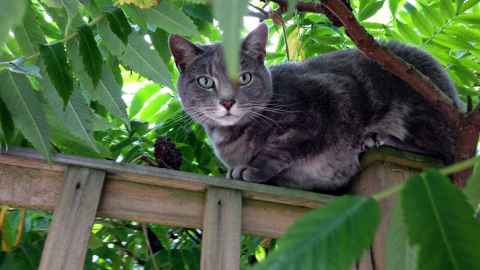Calls for better cat controls
12 April 2018
Opinion: Cats are a continual cause of controversy in New Zealand, they are either loved, or their feral counterparts threaten native wildlife. Should they be considered pests? Professor Margaret Stanley argues the importance of making the distinction.

Auckland Council has been caught up in debate over the inclusion of cats in a proposed new Regional Pest Management Plan and is now considering public submissions. As a nation of cat lovers, it would be safe to assume the decision to include our feline friends as ‘pests’ will have attracted a fair amount of feedback from concerned owners.
The current Regional Pest Management Strategy (which has been operating since 2007) includes feral cat management, but the main issue for biodiversity and biosecurity managers has been the lack of a clear demarcation of what is a ‘pest cat’ and what is someone’s ‘pet cat’.
It raises questions such as what happens when they get a cat in a live trap in a significant ecological area? How do they work out if it is someone’s pet or a stray or feral cat? Any cat caught in a live trap no doubt acts pretty feral out of fear, so it’s important to get the definition right.
The proposed new plan is putting forward a logical way of doing this that will keep wildlife safe, and improve the safety of pet cats – as long as they have been microchipped and registered.
Under the proposed plan, cats will continue to be managed in areas of high biodiversity value (for example, Whatipu) along with rats, stoats and other predators. If they cannot be identified as being owned via microchip and accompanying registration on the NZ Companion Animal register, they will be considered pests.
As a nation of cat lovers, it would be safe to assume the decision to include our feline friends as ‘pests’ will have attracted a fair amount of feedback from concerned owners.
Conversely, if your cat is found within one of these conservation areas – and it is microchipped and registered – it will be identified as owned and returned to you.
If you are worried about the unlikely event of the microchip failing, you can get it checked by the vet or simply keep your cat contained for the duration of the control programme.
A detailed communication plan would be put in place for any new high biodiversity sites where cats will be managed as part of predator control. It would include awareness campaigns, such as mailbox drops, to ensure owners are aware of the risks of having unidentifiable cats in these areas or they can keep their cats indoors if they are concerned about microchips failing.
Other cat management measures proposed in the plan are:
- feeding of cats prohibited on parkland containing Significant Ecological Areas;
- cat owners to prevent cats from entering sites managed as threatened species refuges, indicatively including open sanctuaries (Tawharanui, Shakespear), kokako/kiwi management area in the Hunua Ranges, and Ark in the Park; and
- cats being moved to or among islands must be micro-chipped and registered on the NZ Companion Animal register, and no cats to be brought within 200m of cat-free islands.
So no-one is targeting your pet cat, or trying to kill it, so the fear people have for their cats by the proposals within the new pest management plan is misplaced. In fact, by encouraging you to microchip your cat and keep it indoors, you could say the plan is helping people to keep their cats healthy.
Currently, few Aucklanders keep their cats indoors – but indoor cats can’t get run over, injured by strays, and are less likely to pick up diseases.
We know feral cats have been responsible for the extinction of birds in New Zealand (and globally), but what about urban cats? Our research using camera traps in Auckland urban bush patches showed approximately 53 individual cats (conservatively identified by pelt patterns) detected at eight sites over five nights. These numbers are conservative (our cameras wouldn’t detect all cats) and astounding.
Further, numerous pet cats are wandering around Auckland’s parks and significant ecological areas. And this is not just in Auckland: plenty of research has shown that cats wander from suburban homes, frequently use local bush areas and kill wildlife. Ultimately, we need people to keep their cats inside their property and out of ecological areas, so in some ways this proposed pest management plan doesn’t go far enough.
Many people in our community (including cat owners) understand that cats impact wildlife – from weta to lizards to birds. However, the proposed plan ensures that biodiversity managers can do their job in keeping our wildlife safe and protecting Auckland Council’s (and the community’s) investment in our special ecological places, while at the same time protecting pet cats by clarifying ownership and improving welfare of the cats themselves.
Technically, the proposed plan is excellent, and its pest management strategies will deliver enormous outcomes for biodiversity, mana whenua, human health and Auckland’s economy. Don’t let it be derailed through fear that the Council wants to kill your pet cat. It is simply not true.
Associate Professor Margaret Stanley is in the School of Biological Sciences at the University of Auckland.
This article reflects the opinion of the author and not the views of the University of Auckland.
Used with permission from Newsroom, Calls for better cat controls published on 12 April 2018.